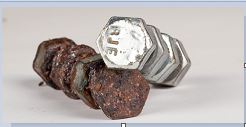Nitrogen Application
Oxidation and why it is a problem
Oxidation is a part of the natural process where oxygen is absorbed by a substance. Chemicals are exposed to oxygen in the air and have their composition changed. Result of the changes could be like following:
- Changes of colors in food, growth of bacteria, deterioration of taste and quality
- Rancidity in edible fatty or oils
- Corrosion, flakes, rust and deterioration in metals
- Weakening integrity of soldering process in manufacturing process
- Combustible or explosive reaction
Why Nitrogen?
Nitrogen (N2 ) is an inert gas (high abundance, low cost) and does not tend to react with other substances (chemically inactive). As such, it provides solution to counter Oxidation problems. Nitrogen is the largest consumed industrial gas. It is used in a broad range of industries such as chemicals, pharmaceuticals, petroleum processing, glass and ceramic manufacture, metals refining and fabrication processes, pulp and paper manufacture and healthcare, etc. Nitrogen is also referred as GAN or GN in its gaseous form and LIN or LN in its liquid form.
In manufacturing world, using nitrogen in filling, blanketing, or sealing process help protecting against oxidation, contamination, or evaporation. This means prevention against degradation of products’ quality or integrity during its production process, storage, transport, shelf and/or service life.
Nitrogen is also a cost-effective way to remove oxygen and create inert (protective) atmosphere. Many chemicals used in the manufacturing process are highly volatile/flammable, thus allow for combustion on exposure to air. as inert atmosphere, nitrogen does not support combustion, thus help prevents for fire or explosion. This means a safer operation at plants or factories.
Liquid nitrogen is valued for its coldness and inertness. Nitrogen boils at -195.8°C and when vaporized and warmed to ambient temperature, it absorbs a large quantity of heat. It is an effective coolant to rapidly cool processes to low temperatures, especially for materials which are heat sensitive to allow machining or fracturing. Liquid nitrogen (LIN) is increasingly used in innovative cooling and freezing technologies to provide efficient and environmentally friendly solution to freezing and chilling process.
Read more on how nitrogen is used in various industries below
Why consider Nitrogen on-site?
Having nitrogen generator on site has several advantages or benefits to your plants productivity.
- A guaranteed on-demand supply of nitrogen
- Can be configured to meet your specific requirements hence increase efficiency and productivity
- Less disruptions to production for routine/direct maintenance.
- The on-site nitrogen investment could be expected to pay for itself in typically less than two years (if switching from liquid nitrogen to gas).
- Nitrogen gas is produced at low pressure which eliminates safety hazards associated with high pressure cylinders
Which types of Nitrogen Generator is right for you?
PSA (Pressure Swing Adsorption) generators
PSA nitrogen generators are generally used in applications where the purity requirement is higher than 99.5% (0.5% O2 or below).
How it works
PSA technology utilizes two towers that are filled with carbon molecular sieve (CMS). Two towers are packed with carbon molecular sieves (CMS) to adsorb oxygen as compressed air moves through the vessel. As one tower is absorbing the second vessel is depressurized, and a small amount of nitrogen flows downward to release the oxygen collected during the adsorption process. The two towers alternate between the adsorption and desorption processes
Click here to see our range of Cangas PSA nitrogen generators
Membrane nitrogen generators
Typically used in applications where the purity requirement is below 99.5% (0.5% O2 or higher).
How it works
filtering oxygen from the dry compressed air stream via hundreds of thousands of hollow, polymeric fibers each the diameter of a human hair to produce gaseous nitrogen. The purity of the nitrogen can be adjusted by regulating the volume of air passed through the membrane. Membrane modules can be added as necessary, so it’s easy to expand as requirements change Pressure, flow rate and membrane size/quantity are the main variables that affect nitrogen production.
At a given pressure and membrane size, increasing the nitrogen flow allows more oxygen to remain in the gas stream, lowering nitrogen purity. Conversely, decreasing nitrogen flow increases purity. For a particular purity, higher air pressure to the membrane gives a higher nitrogen flow rate.
Click here to see our range of Cangas membrane nitrogen generators
Cryogenic distillation
Typically used in applications where the purity requirement is above 99.9% with large volume (>2,000M3/Hour)
How it works
Gases can be separated from air by first cooling it until it liquefies, then selectively distilling the components at their various boiling temperatures. The process can produce high purity gases but is energy-intensive. The cryogenic separation process produce high purity gases and large volume which requires a very tight integration of heat exchangers and separation columns to obtain a good efficiency. To achieve the low distillation temperatures an air separation unit requires a refrigeration cycle that operates and the cold equipment has to be kept within an insulated enclosure (commonly called a “cold box”). The liquid gases are separated through distillation columns according to the boiling point of each gases. The final products produced in gas form are warmed against the incoming air to ambient temperatures and supplied by pipeline to large industrial users near the production plant. Long distance transportation of products is by shipping liquid product for large quantities.


